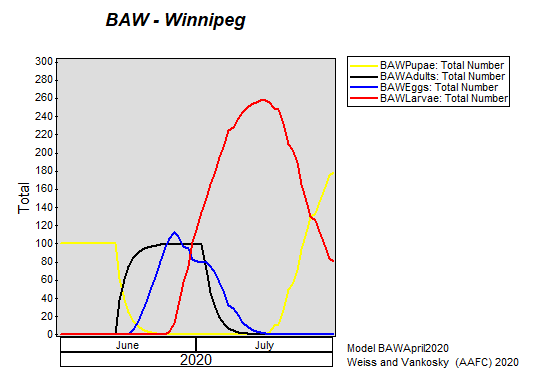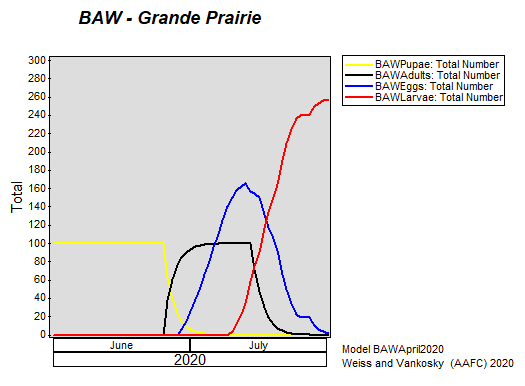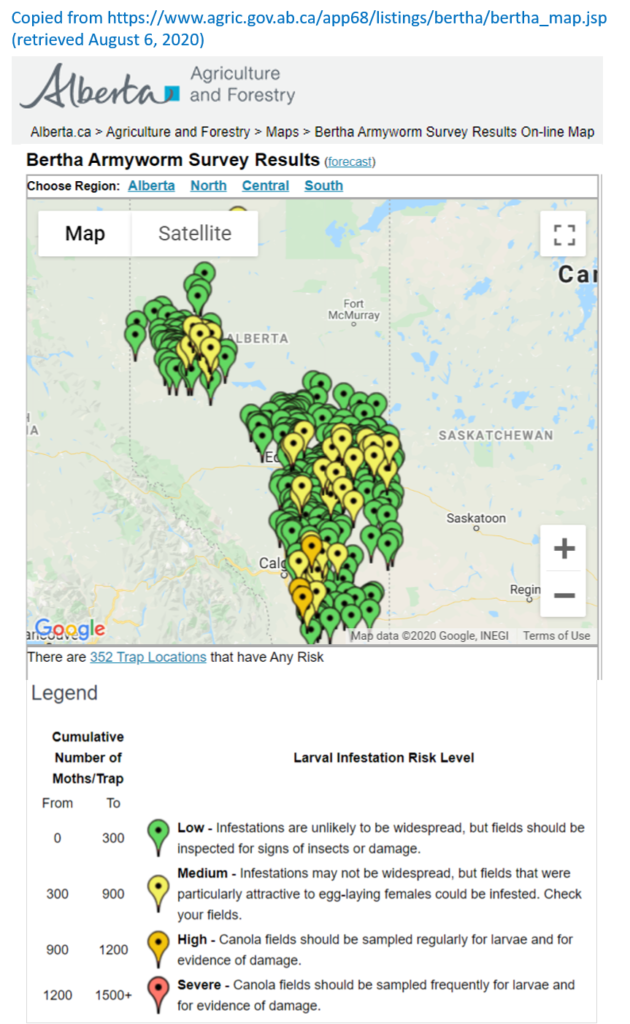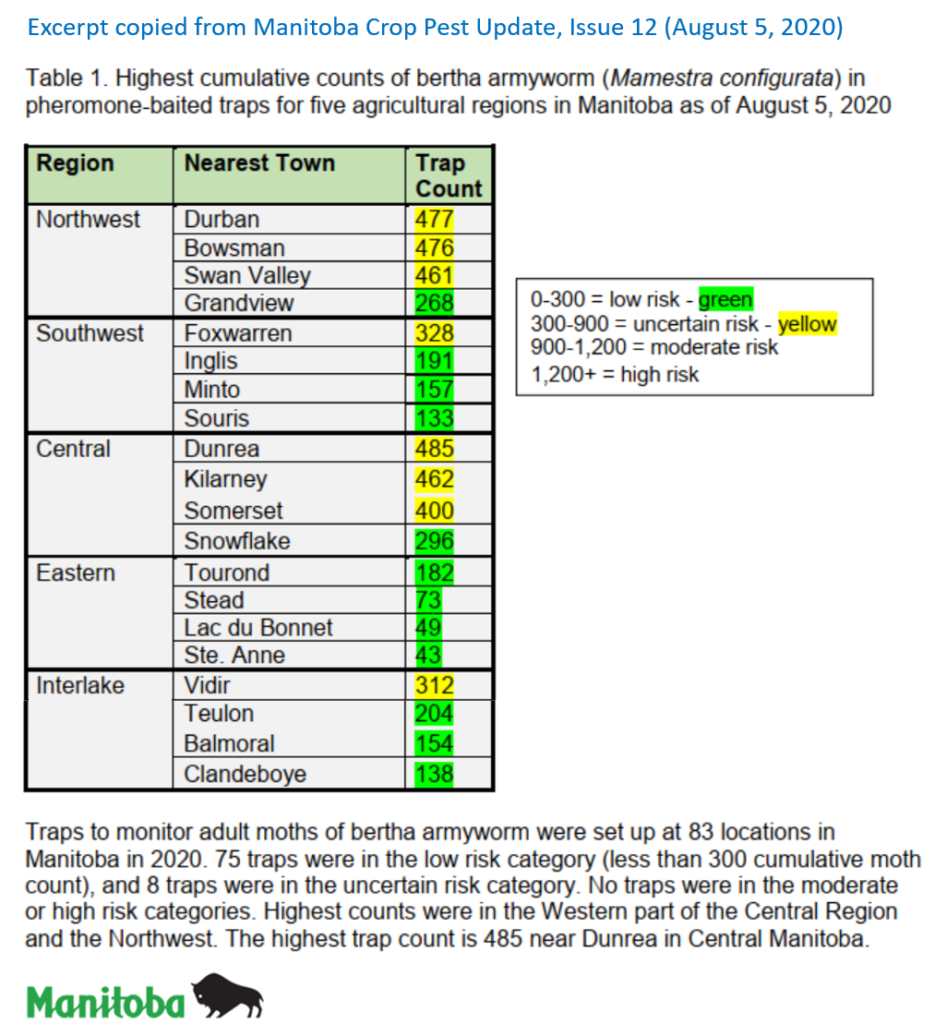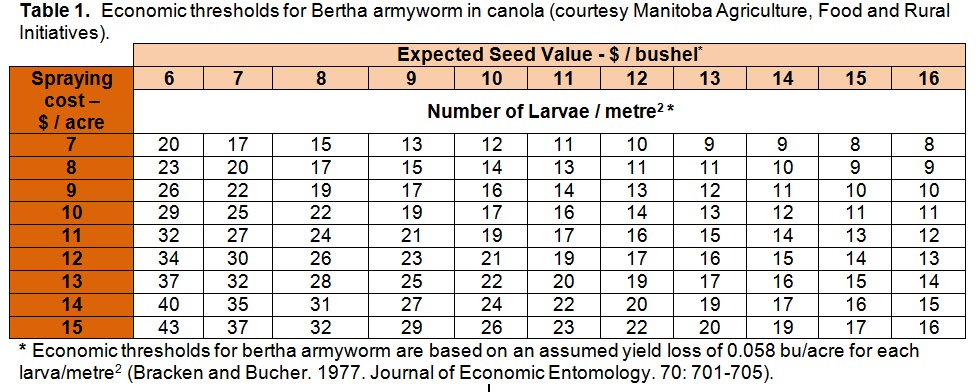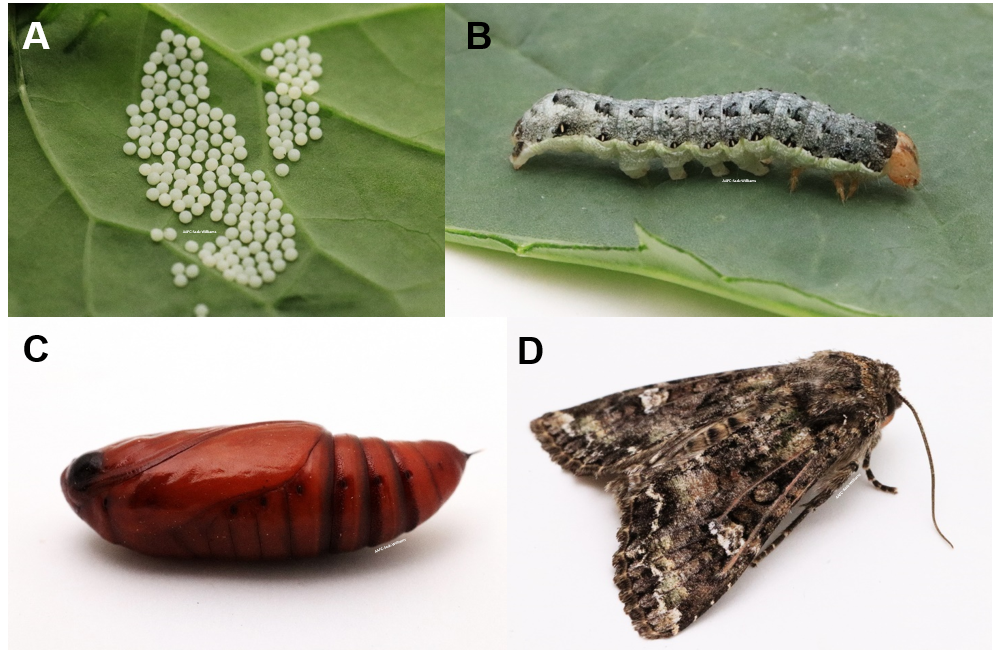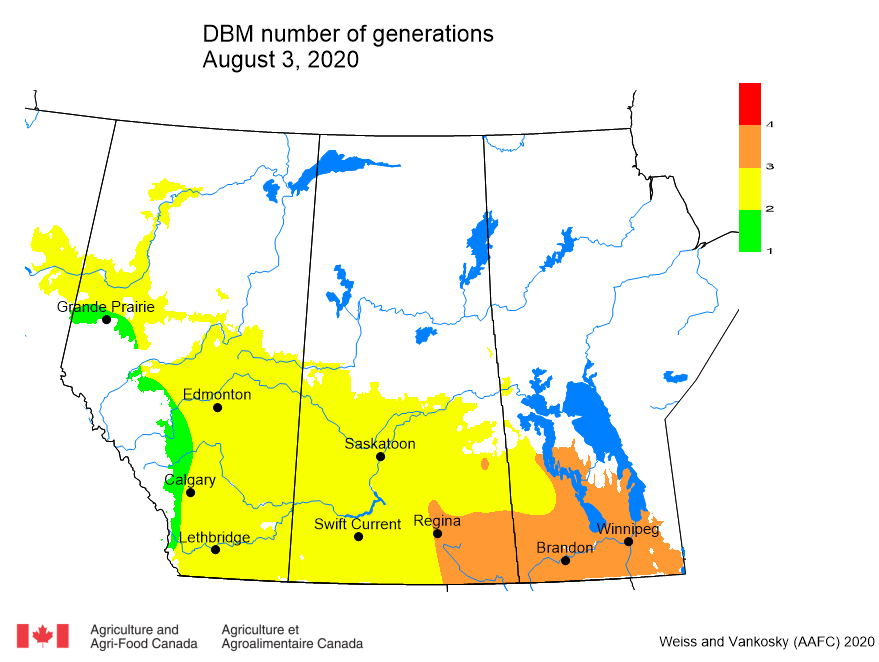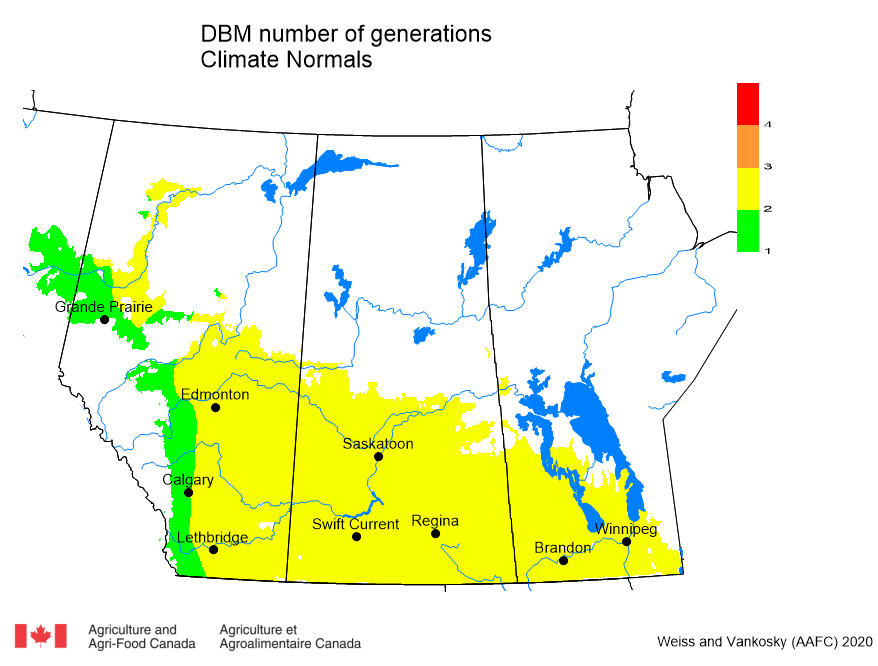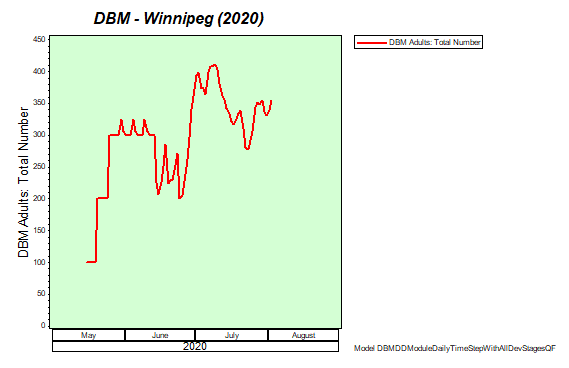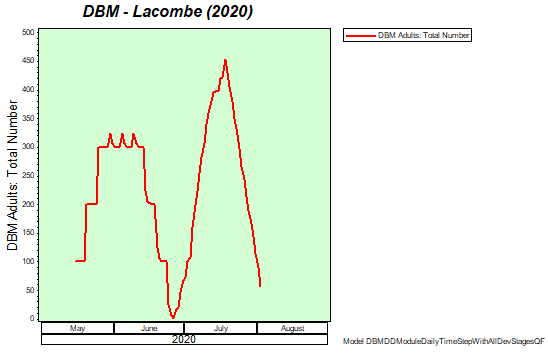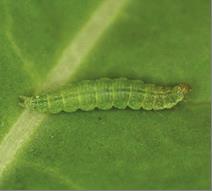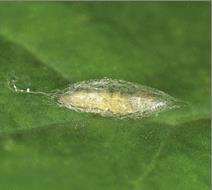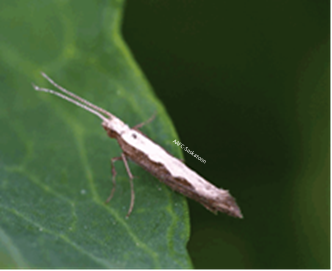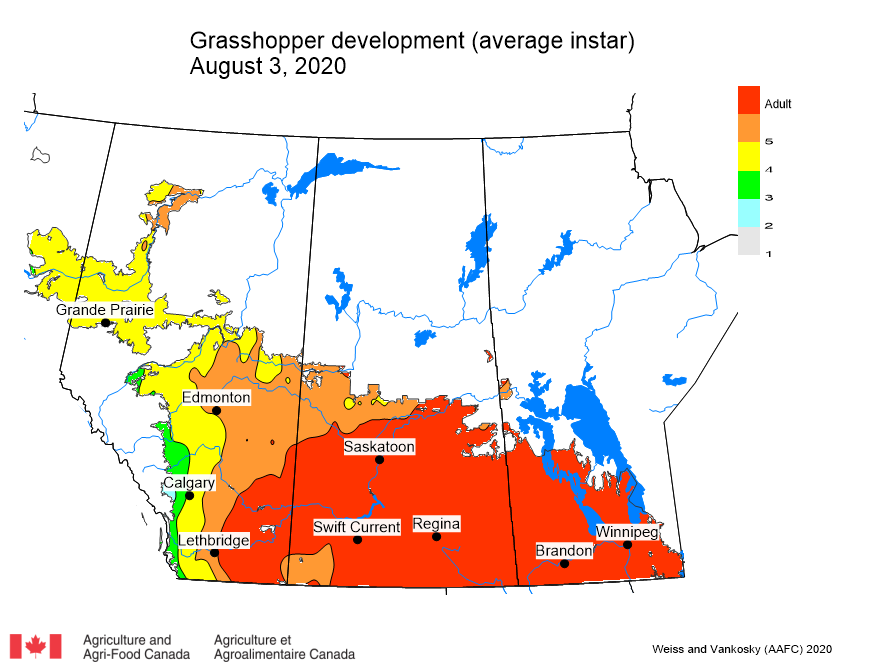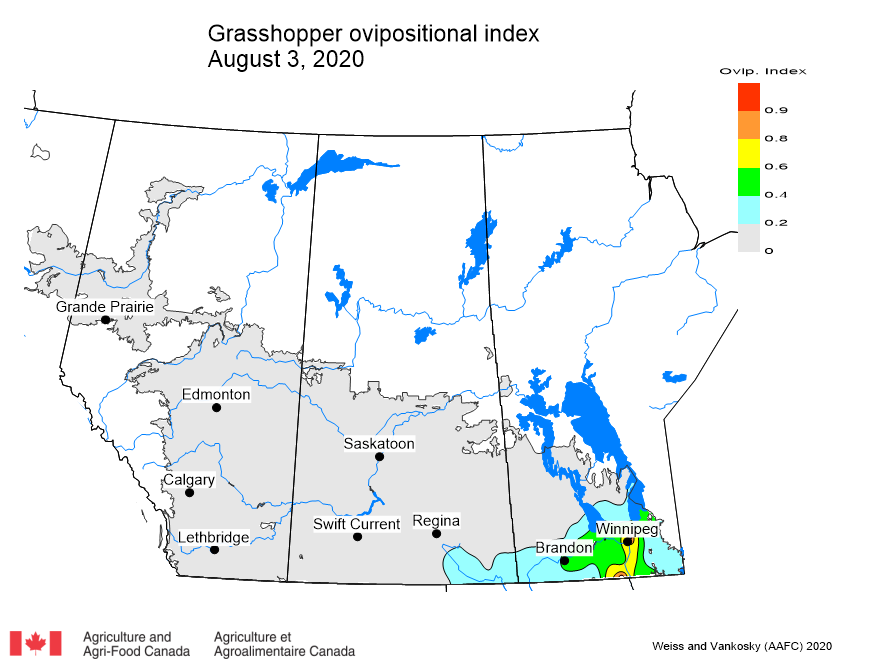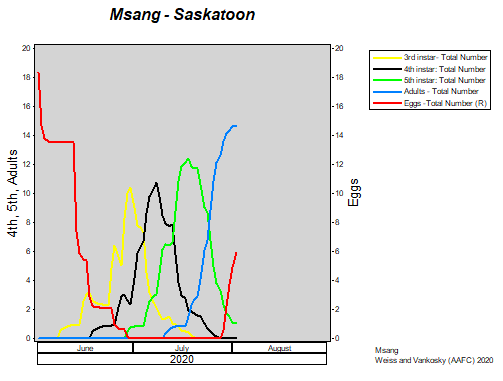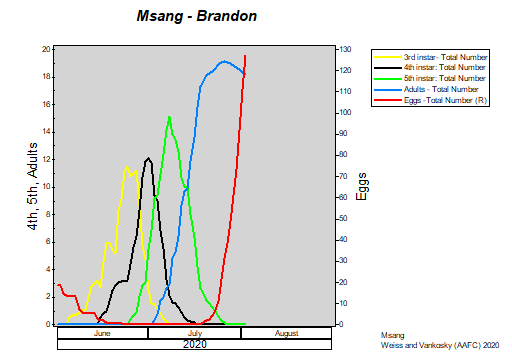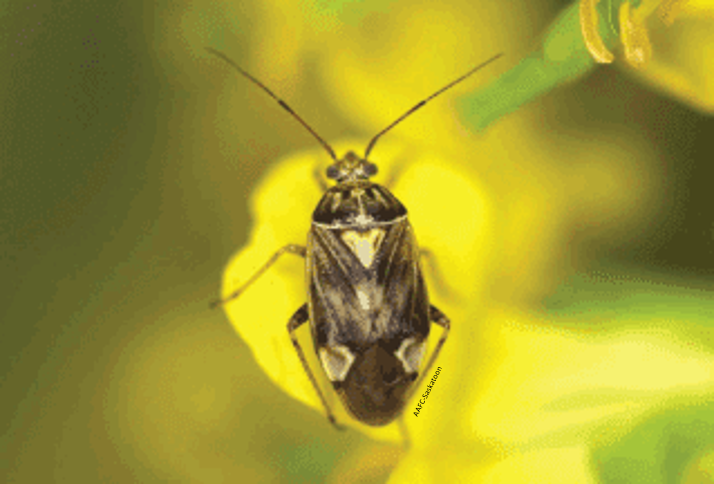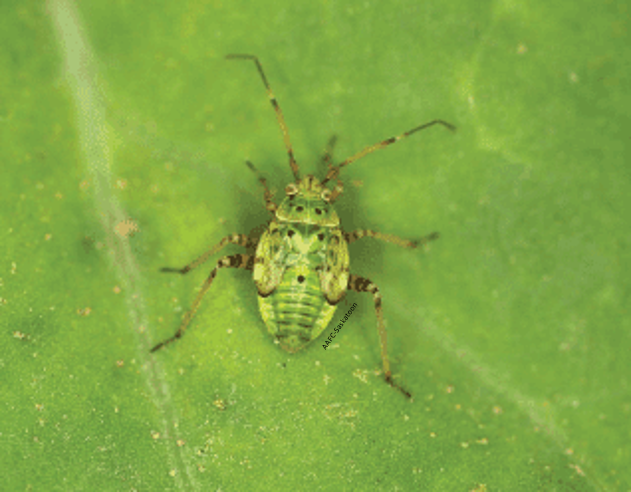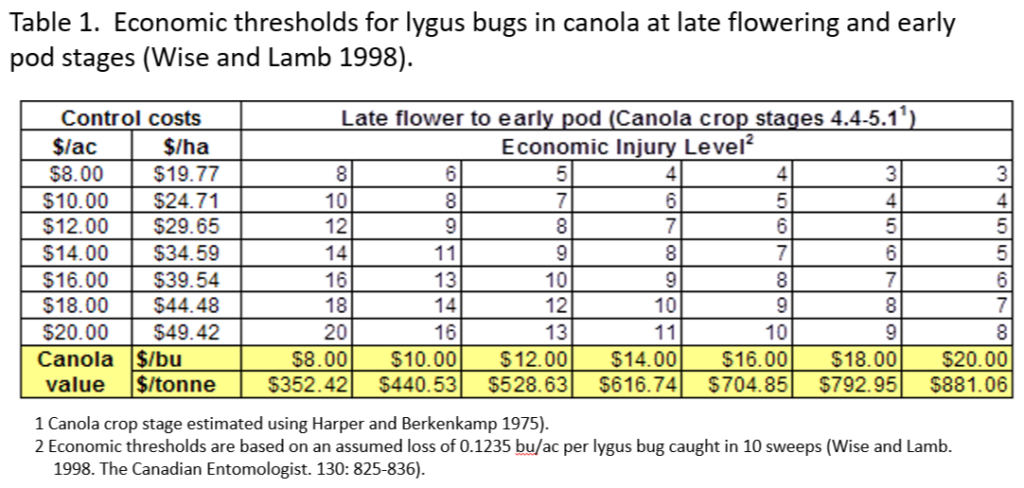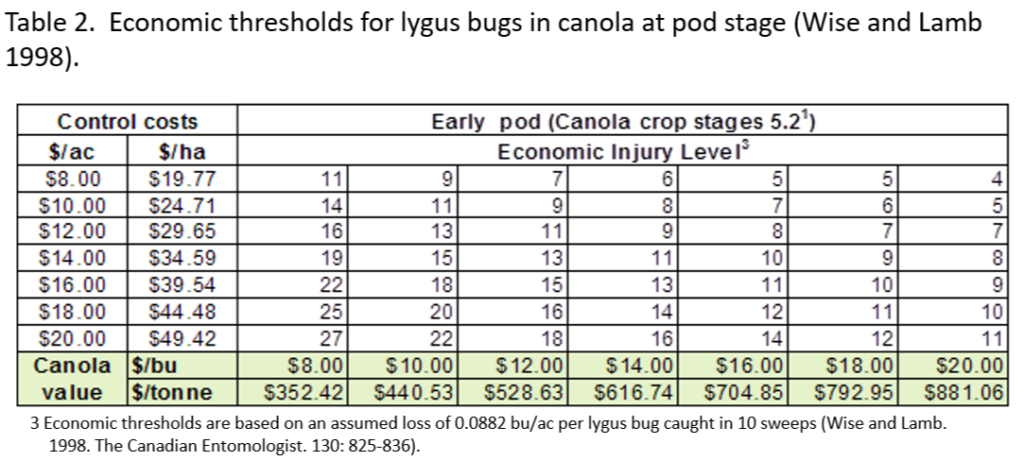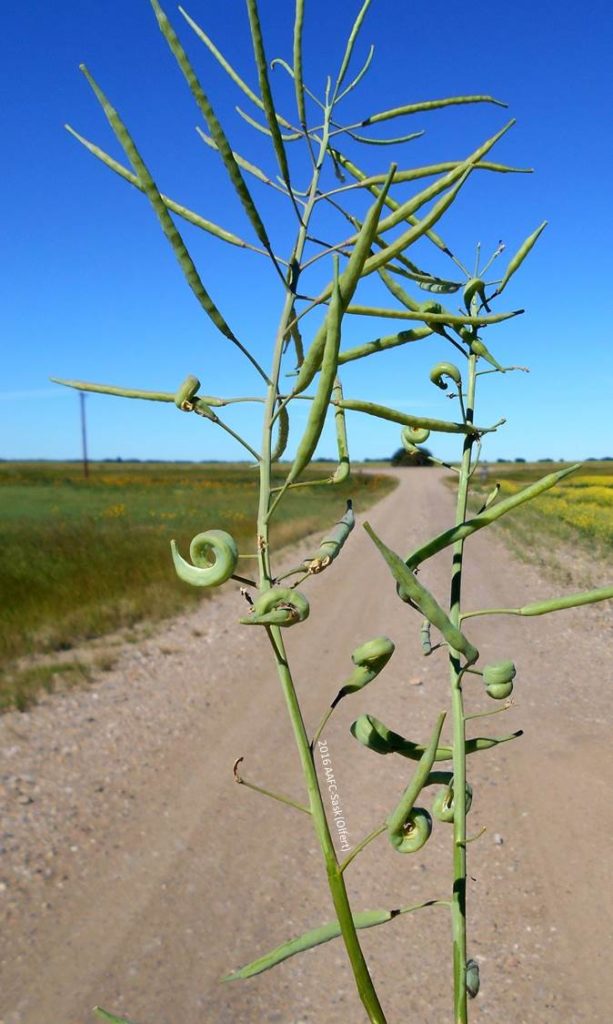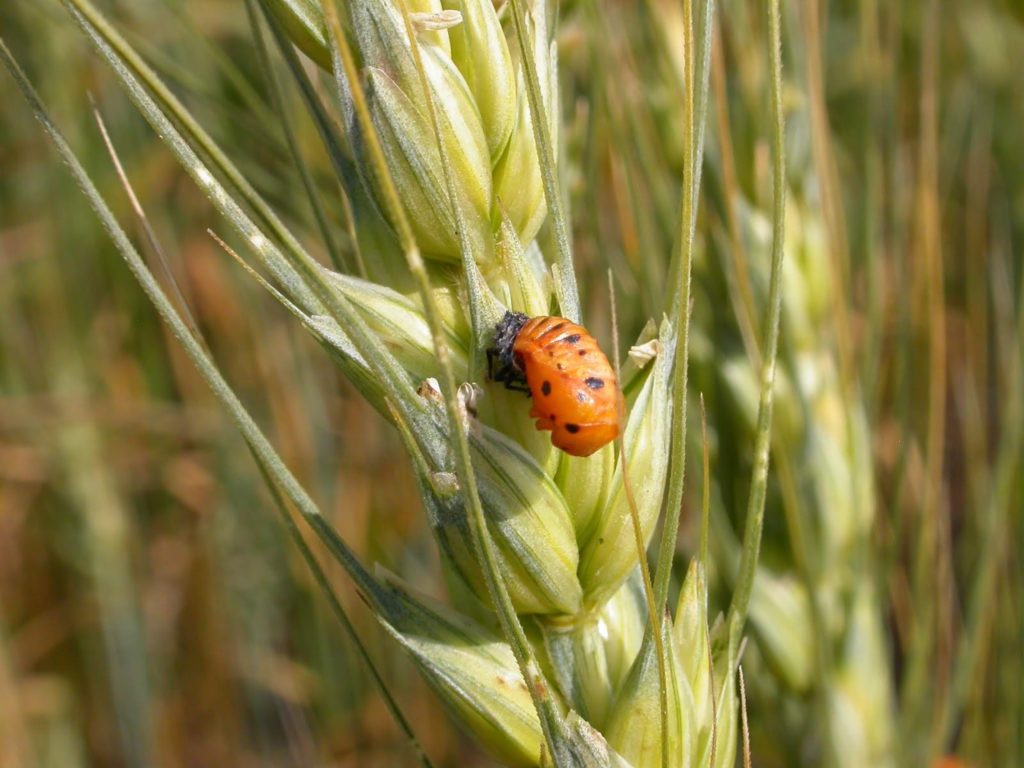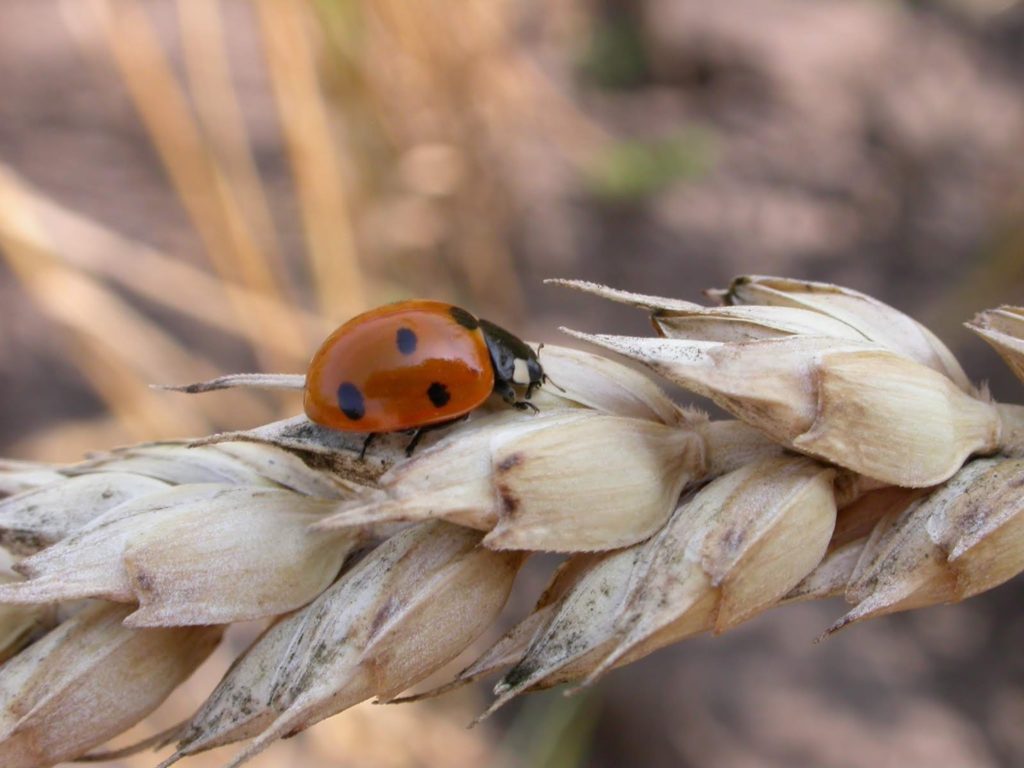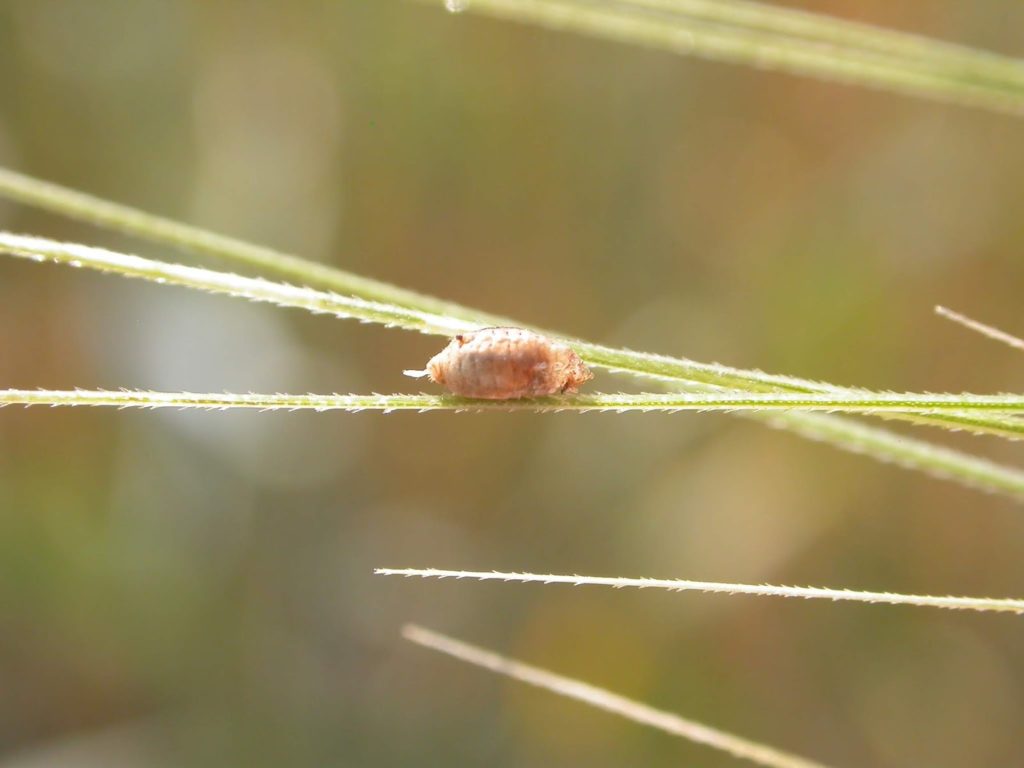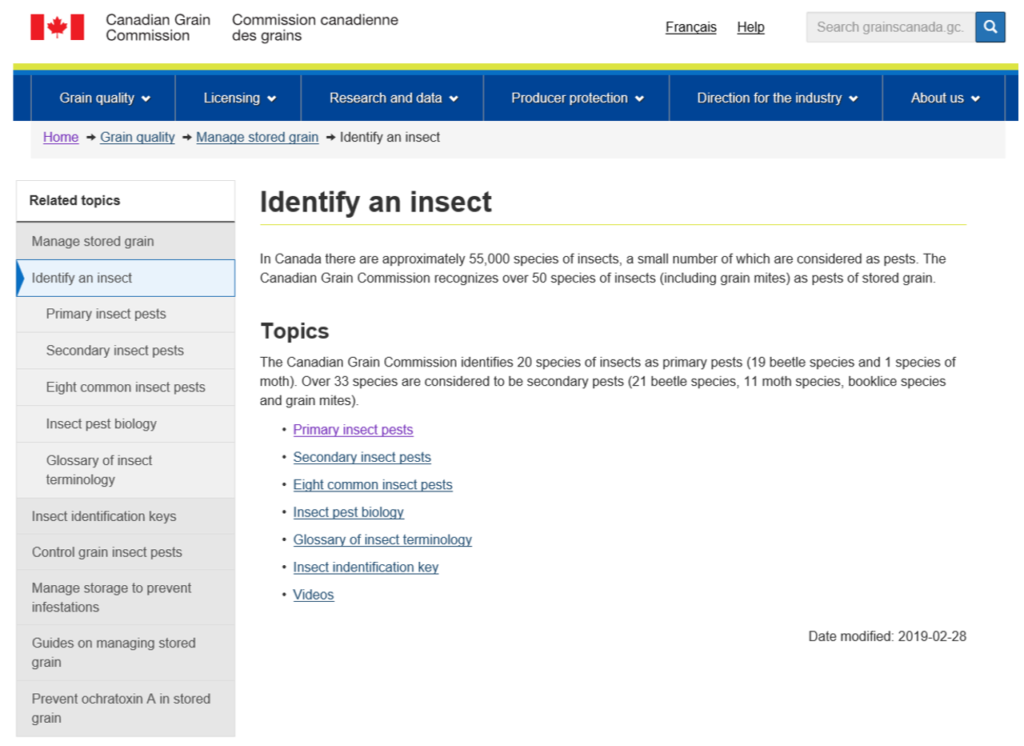This past week (July 28 to August 3, 2020) prairie temperatures were warmest in southeastern Alberta and southwestern Saskatchewan and coolest in southern Manitoba and the Peace River region of Alberta and British Columbia (Fig. 1). Temperatures in the past week represent a switch from previous weeks, where it was warmer in Manitoba than in Alberta. Average 30-day temperatures (July 5 to August 3, 2020) continue to be cooler across most of Alberta than observed in eastern Saskatchewan and Manitoba (Fig. 2). The average 30-day temperature at Winnipeg and Brandon continued to be greater than locations in Alberta and Saskatchewan (Fig. 2).
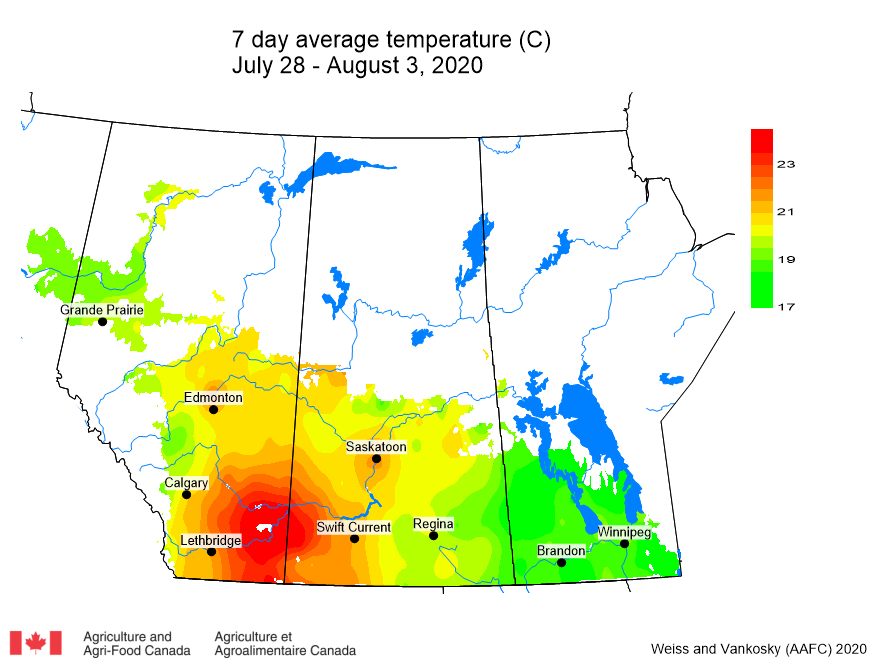
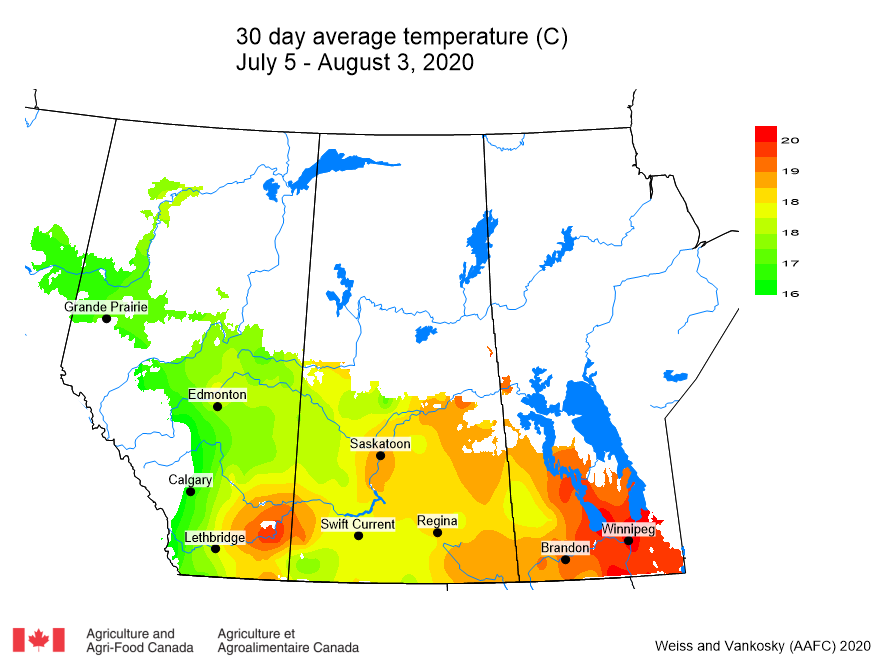
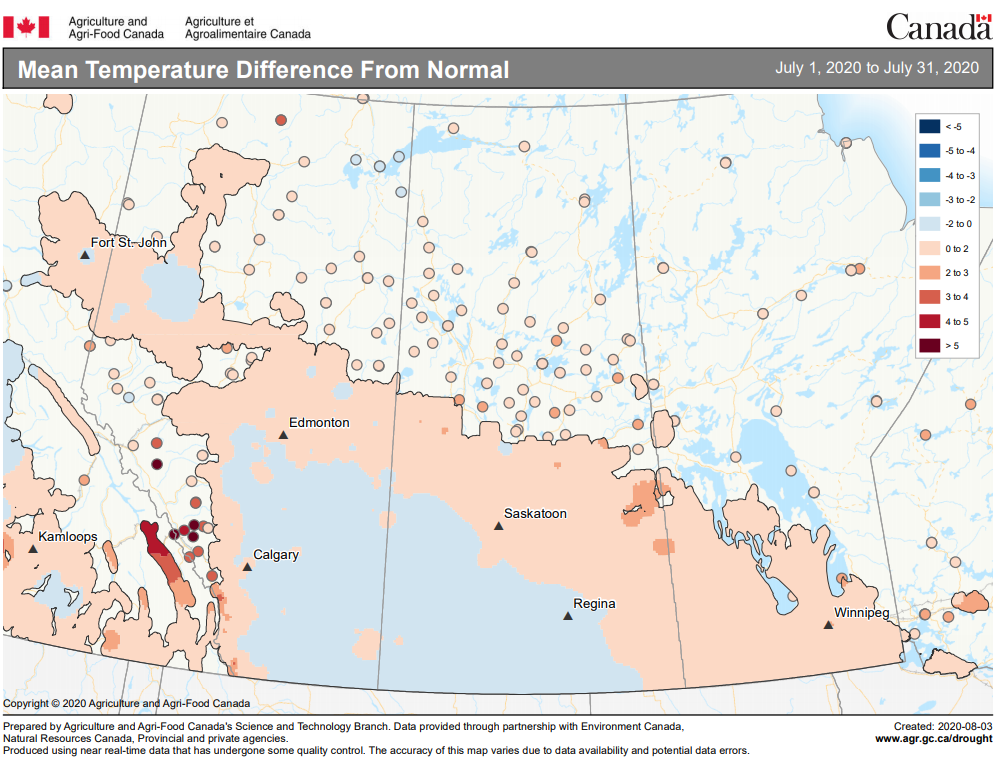
Image has not been reproduced in affiliation with, or with the endorsement of the Government of Canada and was retrieved (13Jul2020). Access the full map at http://www.agr.gc.ca/DW-GS/current-actuelles.jspx?lang=eng&jsEnabled=true&reset=1588297059209
Cumulative rainfall for the past 7 days was lowest across southern regions of Alberta, Saskatchewan and Manitoba (Fig. 4). Cumulative 30-day rainfall was lowest across a large area ranging from southwest Saskatchewan to Saskatoon (Fig. 5). Growing season rainfall (percent of average) is below normal across eastern Saskatchewan and localized areas of Manitoba and above normal across most of Alberta (Fig. 6).
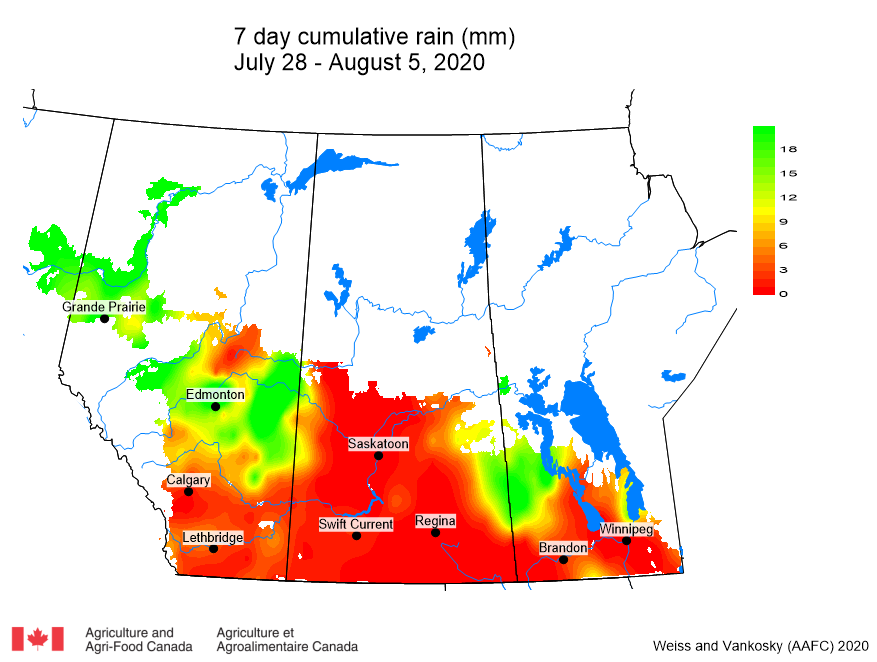
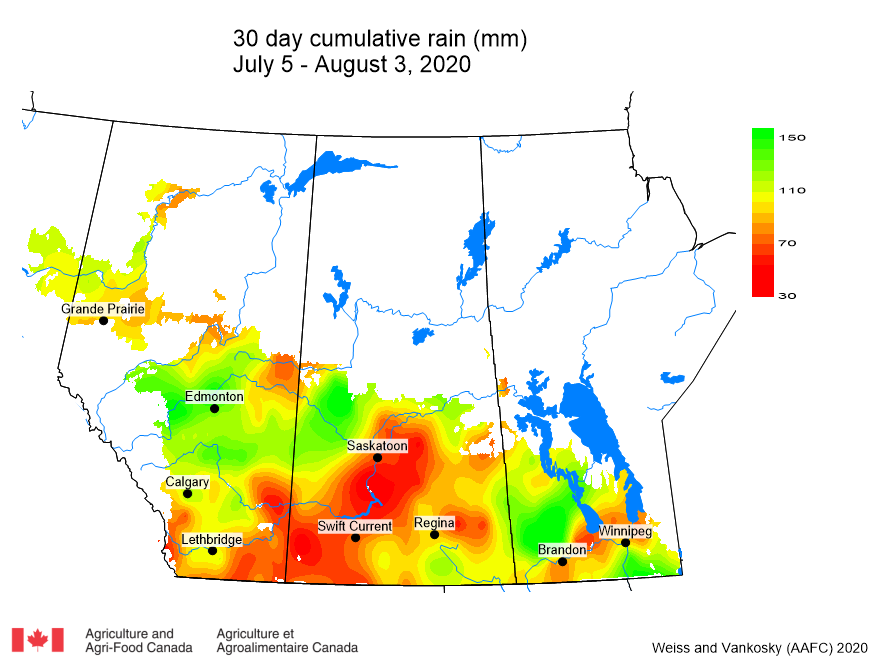
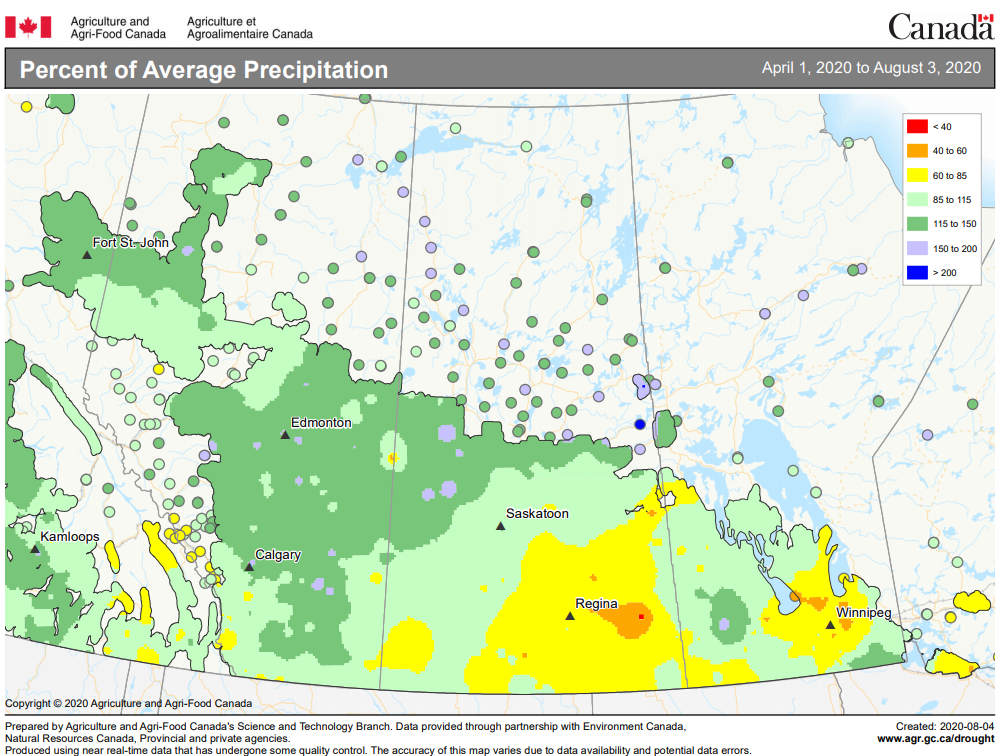
Image has not been reproduced in affiliation with, or with the endorsement of the Government of Canada and was retrieved (04Aug2020). Access the full map at http://www.agr.gc.ca/DW-GS/current-actuelles.jspx?lang=eng&jsEnabled=true&reset=1588297059209
The growing degree day map (GDD) (Base 5 ºC, April 1-August 3, 2020) is below (Fig. 7) while the growing degree day map (GDD) (Base 10 ºC, April 1-August 3, 2020) is shown in Figure 8.
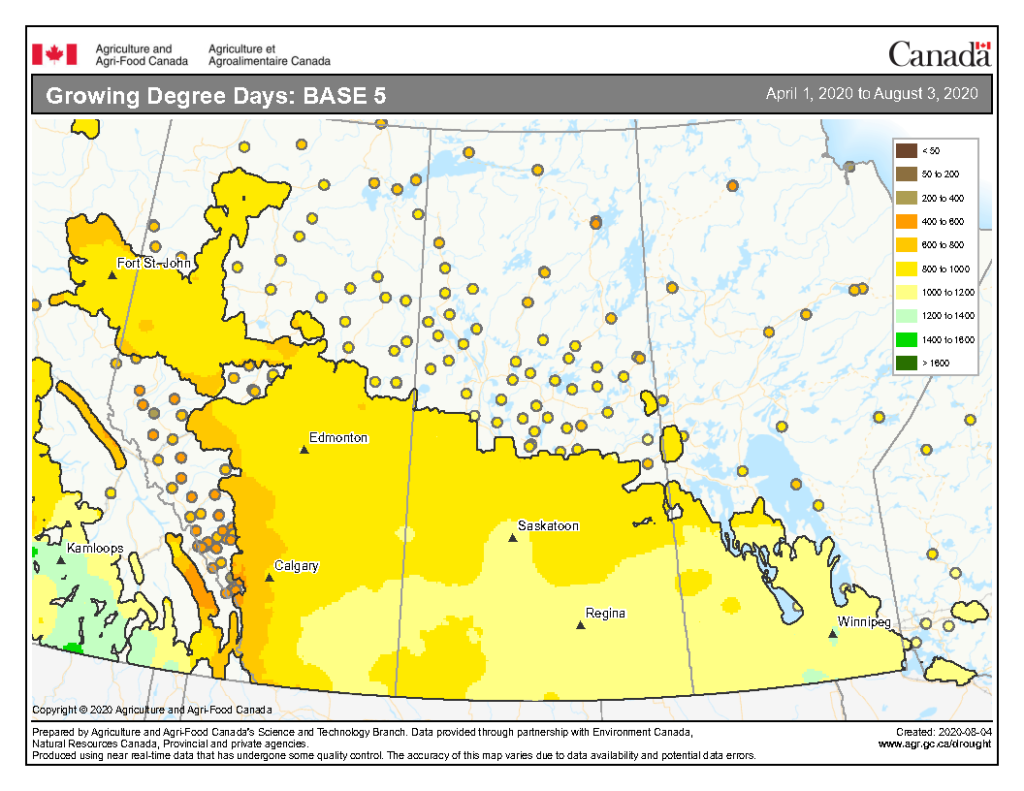
Image has not been reproduced in affiliation with, or with the endorsement of the Government of Canada and was retrieved (06Aug2020). Access the full map at http://www.agr.gc.ca/DW-GS/current-actuelles.jspx?lang=eng&jsEnabled=true&reset=1588297059209
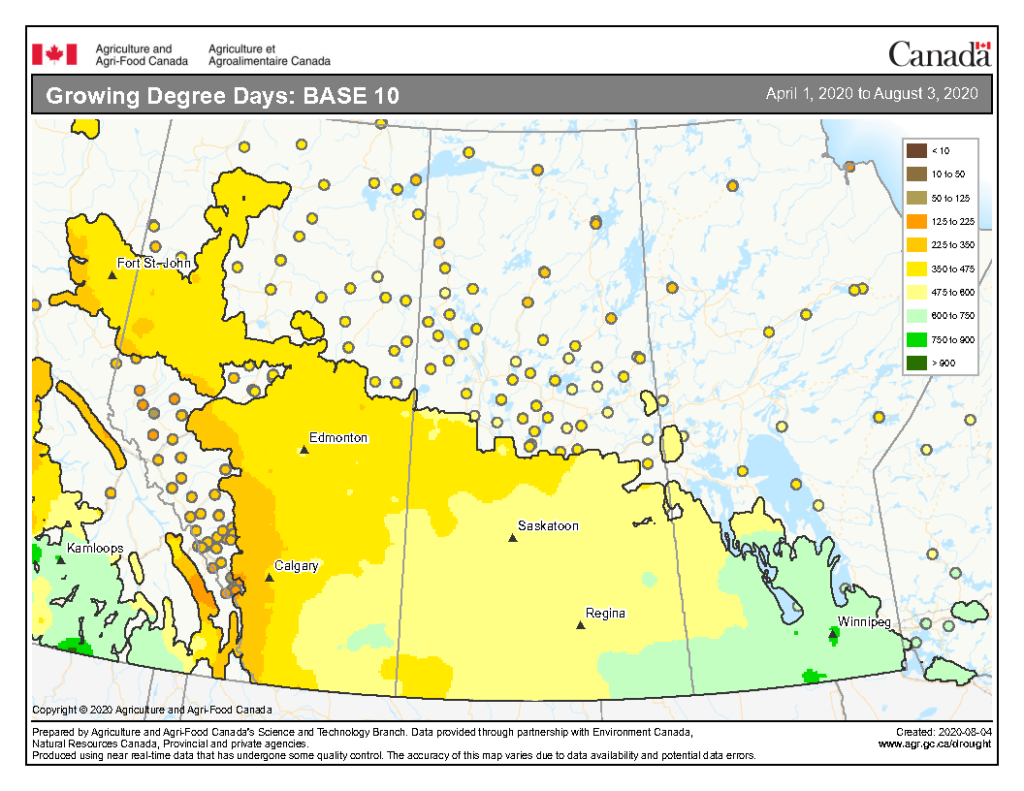
Image has not been reproduced in affiliation with, or with the endorsement of the Government of Canada and was retrieved (06Aug2020). Access the full map at http://www.agr.gc.ca/DW-GS/current-actuelles.jspx?lang=eng&jsEnabled=true&reset=1588297059209
The highest temperatures (°C) observed across the Canadian prairies the past seven days ranged from <24 to >32 °C (Fig. 9). So far this growing season (as of August 6, 2020), the number of days above 25°C ranges from 0-10 days throughout much of Alberta and into the BC Peace then extends up to 51-60 days in southern Manitoba (Fig. 10).
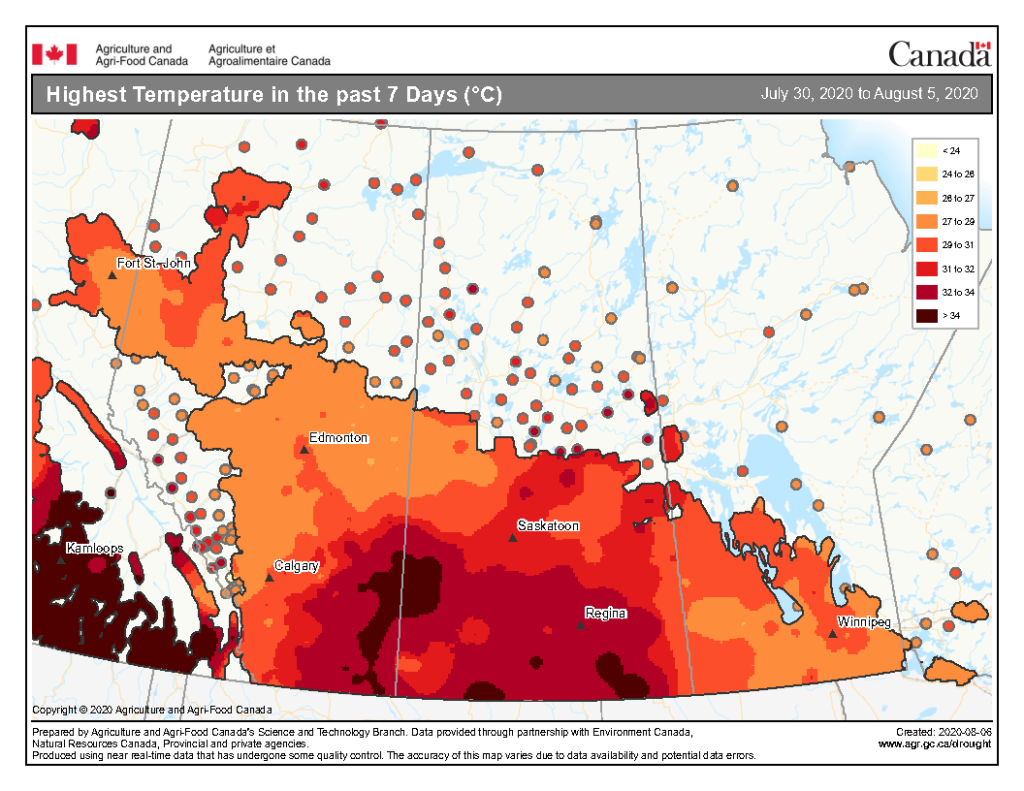
Image has not been reproduced in affiliation with, or with the endorsement of the Government of Canada and was retrieved (06Aug2020). Access the full map at http://www.agr.gc.ca/DW-GS/current-actuelles.jspx?lang=eng&jsEnabled=true&reset=1588297059209
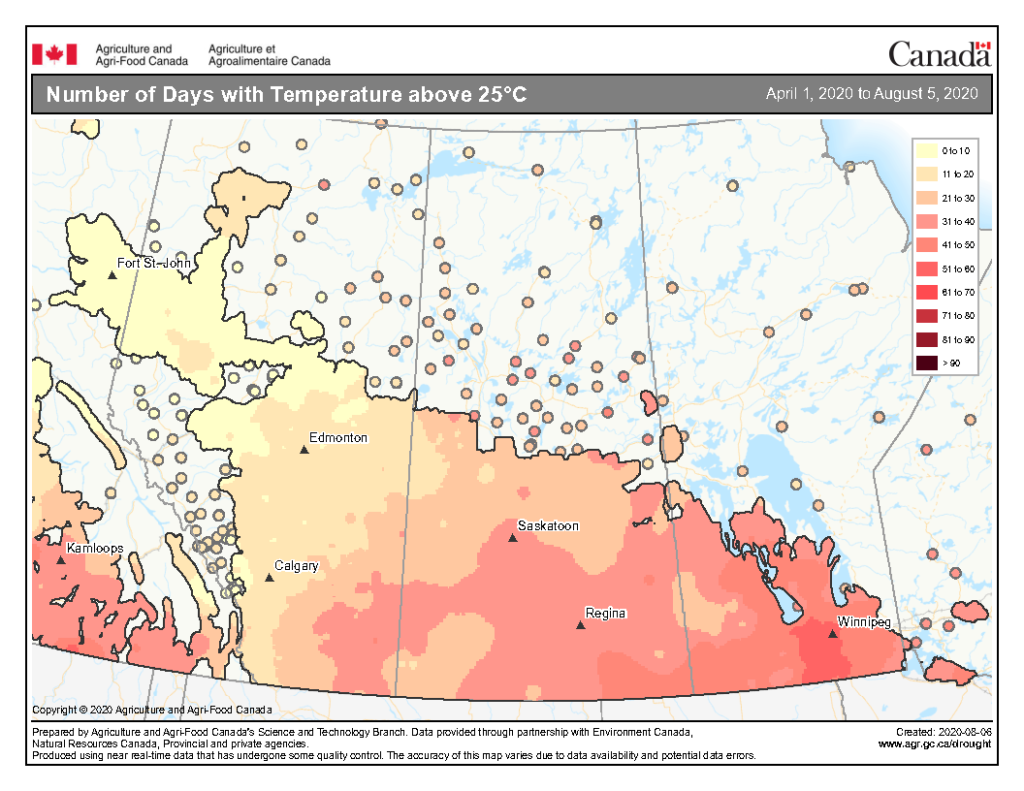
Image has not been reproduced in affiliation with, or with the endorsement of the Government of Canada and was retrieved (06Aug2020). Access the full map at http://www.agr.gc.ca/DW-GS/current-actuelles.jspx?lang=eng&jsEnabled=true&reset=1588297059209
The maps above are all produced by Agriculture and Agri-Food Canada. Growers can bookmark the AAFC Current Conditions Drought Watch Maps for the growing season. Historical weather data can be access at the AAFC Drought Watch website, Environment Canada’s Historical Data website, or your provincial weather network.

